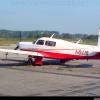LOW FUEL L-R warning light
-
Members Online
- AndreiC
- Marc_B
- Jim Peace
- Skyland
- Buckeyechuck
- Jimmyred
- GeeBee
- 0TreeLemur
- Obsession2
- PT20J
- Zikeli5
- mmcdaniel33
- Slick Nick
- PeytonM
- KSMooniac
- CaptainBen
- Stealth Mooney
- M20F
- blaine beaven
- katzhome
- Planegary
- Rwsavory
- MikeOH
- jamiesj
- Sabremech
- Brent
- eman1200
- good2eat
- dkkim73
- wolfbyte
- aviatoreb
- 47U
- BrettD
- TangoTango
- gabez


Recommended Posts
Join the conversation
You can post now and register later. If you have an account, sign in now to post with your account.